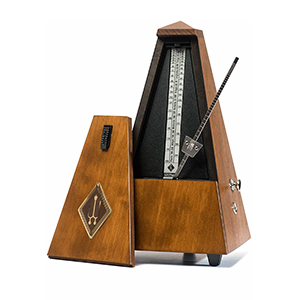

table_pay2 #org-menu #org-menu ul #org-menu ul li #org-menu ul li#first #org-menu ul li#shu #org-menu ul li a #org-menu ul li a label #org-menu ul li a:hover #org-menu ul li:hover /*-Header- Store Home New Arrival Ending Soon Add to Favourites View Feedback Contact us Store Categories Cameras & Photo Lighting &Studio Camera & Photo Accessories Lenses & Filters Tripods & Supports Flashes & Flash Accessories Digital Cameras Camcorders Video Production & Editing Replacement Parts & Tools Binoculars & Telescopes Film Photography Musical Instruments & Gear Pro Audio Equipment Why Buy From us Neewer NW-707 Square Wind up Mechanical Metronome with Accurate Timing and Tempo for Piano Guitar Bass Drum Violin and Other Musical Instruments Ideal for Music Lovers Items DescriptionĮffective Practice Tool: Master rhythm skills and improve your sense of beat and tempo by practicing with our mechanical metronome. I don't think any metronome is going to cure me after all these years.Body. I don't think I am as good at it as I would like to be - my natural tempos seem to be 60, 120, and 90 bpm, "bat-outa-hell" and "just right for this Mozart Allegro." I'm really bad with tempos that I deem too slow (which can happen to me in ensemble practice sessions with others) and I will tend to rush. I think it is good to find some tempos that are natural to oneself and try to learn to hold to those tempos without aids. My own use of metronomes has usually been to get the right tempo in practice and to work myself to the right tempo on tricky passages. But those of us who are reading music don't have enough eyes to use that very function usefully. I think they can be more like watching a conductor than the moving lights on an E/E metronome. The mechanical metronomes include the ones with a visible "pendulum" that can be something like watching a conductor.
#Mechanical metronome free#
The people I play with all seem to have smartphone tuner and metronome apps (I have several) so they are always with them - some are free and some cost a dollar or two. The metronomes that are digital are pretty much replaced these days by smartphone apps. There have been E/E metronomes that produce sound without any visual signal and others that have a line of several lights that attempt to simulate a conductor's motion.
#Mechanical metronome skin#
The Peterson "Bodybeat" is one that can produce sound but can also be attached to your body so it inputs a beat right on to your skin - almost like tapping your foot - but not quite as good (in my opinion after trying it on my ankle). The E/E types include "digital" and what I would call electromechanical (EM). I am aware of two basic types of metronomes: Mechanical and electrical/electronic (E/E). If you don't have a smartphone there are digital electronic metronome tuners that can be bought for $20 or less. These days I see no reason to use anything but smartphone metronomes and tuners.

So my point is, may be with a mechanical metronome you train as well the visual syncing that's so important when playing with other musicians, specially in chamber music like situations, when playing with just 2-3 musicians.Īndrew Victor Edited: February 12, 2018, 10:53 AM However, specially in excerpts that I have not interiorized yet, it happens that if I look at the metronome stick moving, I get distracted and lose the tempo easily, and I don't fail that much if I just concentrate on the clicks and don't look at the metronome. I can close my eyes and concentrate on the clicks and I can practice in tempo quite easily. I want to approach this question from this perspective: mechanical metronomes send you 2 types of information, visual and auditive, while digital metronomes send you only auditive information (I know some digital metronomes have a screen or LED's as well, but the mechanical metronome bar/stick is much more obvious). I was asking myself while practicing with a mechanical metronome. Tim Ripond Do mechanical metronomes have advantages? Edited: February 12, 2018, 8:47 AM


 0 kommentar(er)
0 kommentar(er)
